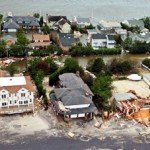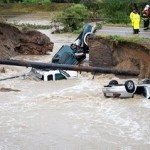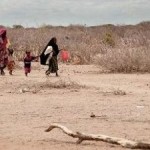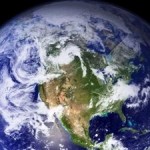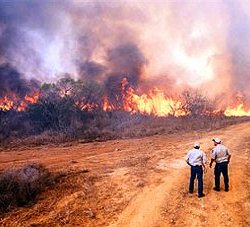Antarctic Sea Ice
For the second year in a row, Antarctic sea ice extent in September reached a record maximum of 19.47 million square kilometers, according to NSIDC. This is approximately 30,000 kilometers larger than the previous record set in 2012, and is 2.6 per cent higher than the 1981-2010 average.
September Antarctic sea ice extent is increasing at an average rate of 1.1 per cent per decade. The changes in the atmospheric circulation observed in the past three decades, which resulted in changes in the prevailing winds around Antarctica, are considered by scientists as factors related to this increase. However, it is possible that this increase is due to a combination of factors that also include effects of changing ocean circulation.
Antarctica differs from the Arctic in that the Arctic is comprised of water surrounded by land. Conversely, the Antarctic is comprised of land surrounded by open ocean water. Wind patterns and ocean currents tend to isolate Antarctica from global weather patterns, keeping it cold.
Regional Temperatures
During the first nine months of 2013, most of the world’s land areas had above-average temperatures, most notably in Australia, northern North America, northeastern South America, northern Africa, and much of Eurasia. Cooler-than-average temperatures were observed across a concentrated region of North America, central South America and the eastern Pacific Ocean waters off the coast of Ecuador, a small region of northern Russia, and parts of northeastern Asia.
The Arctic Oscillation was a major driver of weather patterns during early 2013 across the Northern Hemisphere, bringing cooler-than-average spring temperatures to much of Europe, the south-east United States, north-west Russia, and parts of Japan. The Arctic region in contrast was considerably warmer than average. This so-called warm Arctic-cold continents pattern is characteristic of the negative phase of the Arctic Oscillation, which causes cold Arctic air to flow to lower latitudes.
Temperatures across North America were above average during 2013, but more moderate than 2012. In South America, temperatures were near to above average. This includes Argentina, which had record warmth in 2012.
In the South-west Pacific, Australia reported its hottest month ever observed in January 2013, leading to the hottest summer (December-February) on record. On 7 January, a new national area-averaged daily maximum temperature of 40.3°C was set, and Moomba in South Australia, reached 49.6°C. Warmer-than-average temperatures continued through the year and the country recorded its all-time warmest 12-month period from November 2012-October 2013.
In Asia, Japan had its hottest summer on record. China recorded its warmest August on record (tied with 2006). Republic of Korea observed its 4th warmest July and warmest August, contributing to a record-high summer temperature.
Regional Precipitation
For the first ten months of 2013, there was below-average rainfall across the western United States. During 9-16 September, there was record-breaking precipitation in Boulder, Colorado, with widespread flooding. Parts of Mexico experienced above average rainfall due to tropical cyclones.
In South America, much-below-average rainfall was recorded in northeastern Brazil, where parts of the region suffered their worst drought in the past half century in early 2013. The Brazilian Plateau, the core monsoon region in South America, experienced its largest rainfall deficit since records began in 1979.
Extreme precipitation in Germany, Poland, Czech Republic, Austria, and Switzerland caused the most intense and extended flooding in late May and early June in the Danube and Elbe river catchments since at least 1950.
The southern African countries of Angola and Namibia were gripped by one of the worst droughts in the past 30 years. An active West-African summer monsoon season (July-September) brought average to above-average rainfall over most of central and western parts of the Sahel.
Large areas in south west Asia including India, Pakistan, and western China experienced above-average rainfall due to the active Southwest Asian monsoon, which was one of the longest on record. The monsoon season had an early onset and brought the worst flooding and devastation in the past half century to regions near the India-Nepal border.
From the end of July to mid-August 2013, unusually heavy rain fell near the Amur River, which marks the border between China and Russia. The river reached a record level, surpassing the previous high set in 1984, as heavy flooding hit parts of the region.
Along with extreme heat, most of Australia had drier-than-average conditions throughout the year. With little significant rainfall in northern and eastern parts of New Zealand since October 2012, by early 2013 the country was suffering its worst drought in decades.
Tropical Cyclones
As of early November 2013, the 2013 global tropical cyclone activity was closing in on the 1981-2010 average of 89 storms, with a total of 86 storms in the year to date (wind speeds equal or greater than 63 km/h).
In the North Atlantic, with the season officially ending on 30 November, there have been a total of 12 named storms, compared to the 1981-2010 seasonal average of 12 storms.




